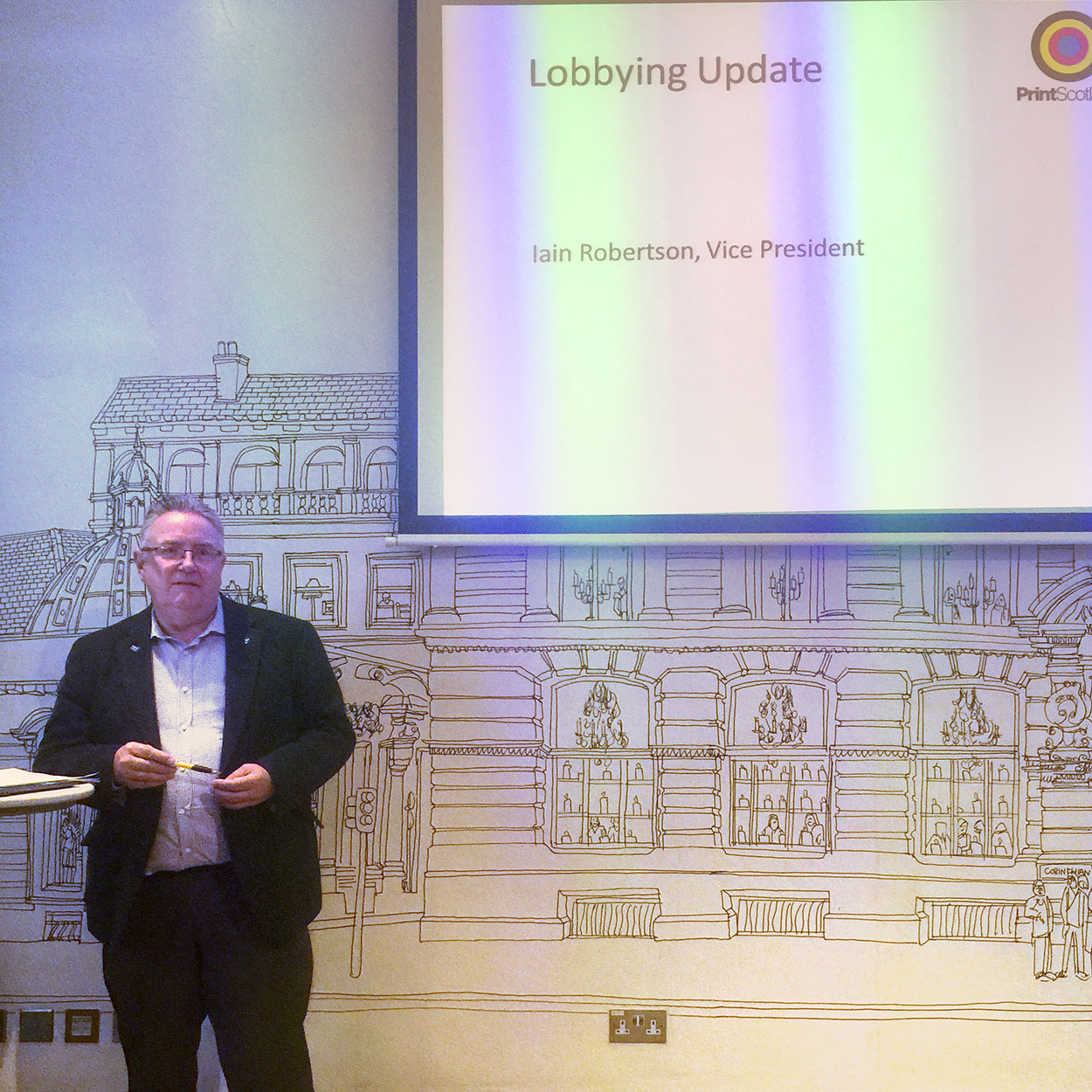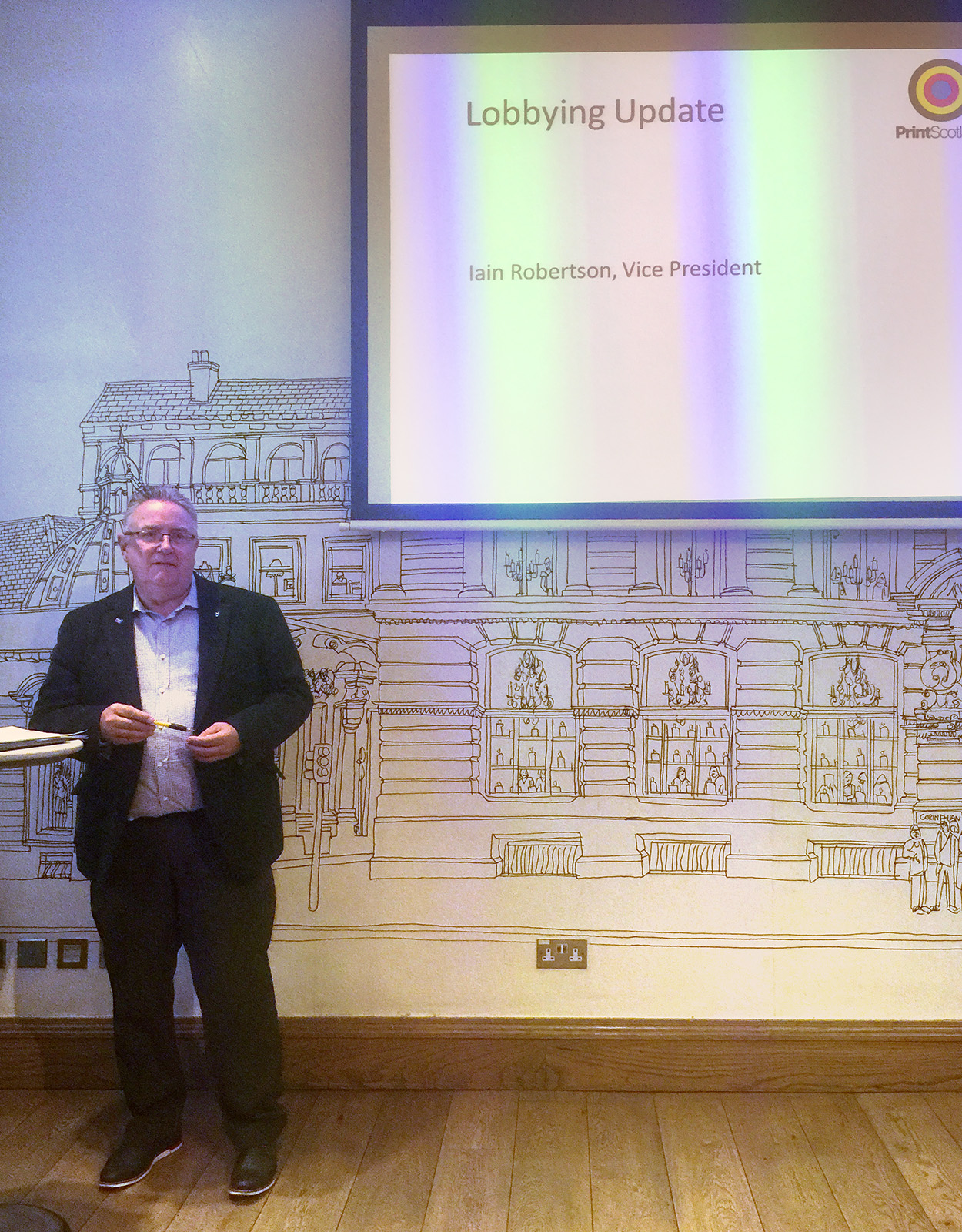
It is not edifying – in fact, it is deeply unsettling – to see a once strong and dynamic Scottish industry in a state of apprehension, not to say fear, about its future.
But that is the pass at which we have arrived as Scotland’s print industry, which employs between 4,000 and 6,000 people, waits to see if it is about lose its biggest client at the stroke of a pen – a pen wielded, ironically, by the Scottish Government.
The signs are not good, and the upshot of what is happening in the sector at the moment could be that work for public bodies – the most important income stream in the business – will become, and remain, out of the reach of all but the biggest of Scottish printers.
It is a course of action which flies in the face of the Government’s oft-stated intention to share the public sector cake more equitably, and to make sure that SMEs get at least a few crumbs from the table.
The focus of the industry’s concern is the new Print and Associated Services (PAS) Framework Agreement which is due to come into effect in March next year. It covers the print needs of some 53 public bodies.
There has, as yet, been no feedback from a consultation by Scottish Procurement on whether this vital agreement should be structured as a single supplier or a multi-supplier portfolio and in fact the stated deadline date for information on this, the 17th August, has passed without comment.
The industry is unanimously in favour of a multi-supplier approach, since the alternative would create, in effect, a monopoly which would defeat the Government’s public aim of wider access, smaller contracts and a bias towards SMEs.
As I say, there has been no feedback but if the industry were looking for straws in the Holyrood wind, its collective heart must have sunk at the end of July when a similar framework agreement was disclosed – to a fanfare of no publicity at all.
This was the Publishing, Print, Design and Associated Services (PPDAS) agreement, which covers services to central government, blue light agencies, universities, the Third Sector and other public bodies.
To hardly anyone’s surprise, it was awarded to the incumbent – the giant, Manchester-based APS Group, which styles itself as an “international marketing and customer communications company”.
By the time the current arrangement – which is advertised as worth £70 million – expires, the APS Group will almost certainly have held the contract for 15 years and there will be no printer left in Scotland big enough to challenge for it. The Government has, wittingly or not, created an enduring monopoly.
Is the same thing about to happen with the PAS agreement, the only other significant, Scottish Government controlled source of income for what remains of Scotland’s indigenous print industry? Anyone reading the runes could be forgiven for pessimism.
For instance, the new PPDAS contract included a host of new agencies with bidders requiring a minimum annual turnover of £7.5m to take part. The message is clear: only the big boys are allowed to play in this game.
This, at least, is consistent with instinctive inclination of public bodies to always go along the path of least resistance and engage with the top of the range, most expensive option, usually from the biggest national or multinational companies. Small local companies are perceived as just too much of a gamble, despite them having the locality, the ability and the flexibility to deliver what could be perceived as a more cost effective and specialised service.
The effect is that work which should be going to Scottish concerns – and which the Government has declared should go to Scottish firms – is being diverted to the international market by risk-averse procurement officials.
Put bluntly, the Scottish print industry is in the process of being offshored.
An accumulation of other factors – paper prices up 15% in 12 months, Brexit volatility and the squeeze on suppliers – add up to an air of gloom in the Scottish print world which is increasingly difficult to dispel.
To add to our difficulties, many large Scottish businesses and Scottish financial institutions such as banks and insurance companies, spend well in excess of £100m of print out with Scotland, the majority of which could be produced in this country.
It is not too late for Scottish Procurement to listen to the concerns of a sector which, given a level playing field, could be viable, vibrant and a social and fiscal contributor.
Many traditional Scottish industries such as coal and steel have disappeared over the years but print need not fall into that category. Our industry could be saved if all of, or at least the majority of, the print generated in Scotland was produced here.
The alternative is to watch it go the way of shipbuilding, deep mining and the car industry and to our members, and the wider print community, this is unacceptable and avoidable.
“The industry is unanimously in favour of a multi-supplier approach, since the alternative would create, in effect, a monopoly which would defeat the Government’s public aim of wider access, smaller contracts and a bias towards SMEs.”
By Iain Robertson
Iain Robertson is Director and Vice-President of Print Scotland, the trade association and voice of Scotland’s graphic communication industry.

